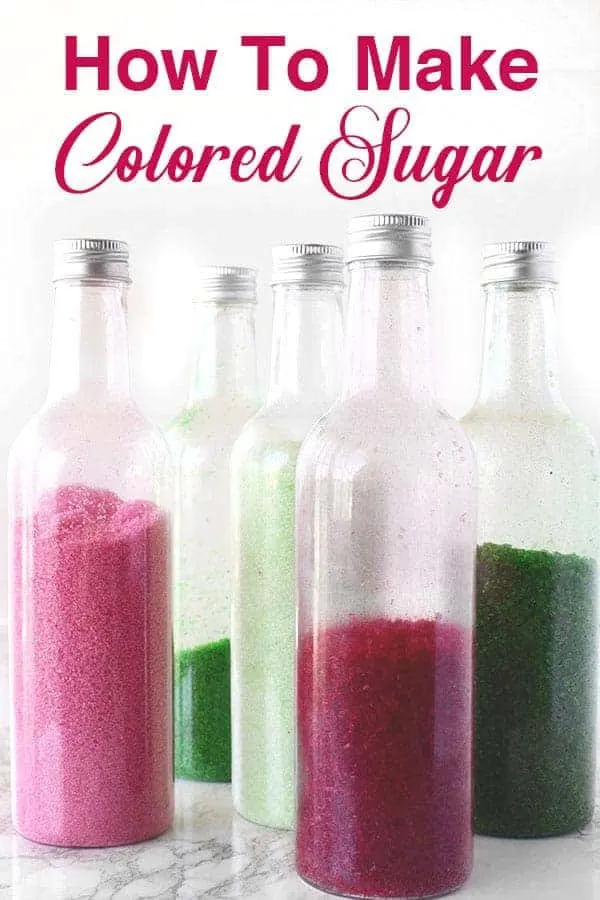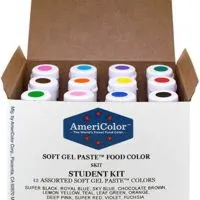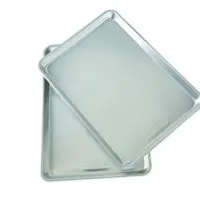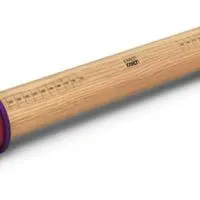Creating your own colored sugar is fun, easy, and simple. It's a great way to add your own beautiful colors to cookies, cupcakes, and more.
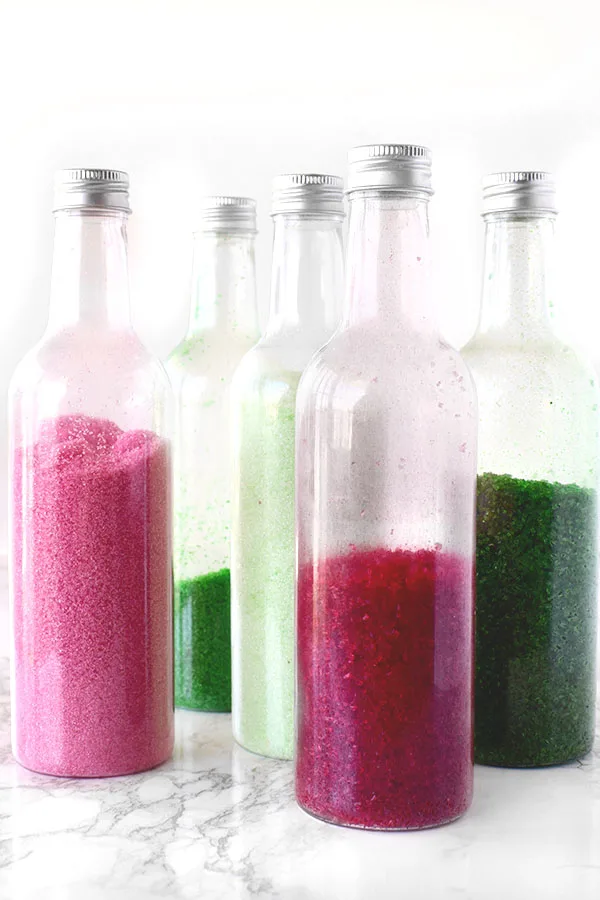
Making colored sugar at home gives you a lot of control so you get exactly the color you want.
Just a drop of gel food coloring can give you a light pastel like colors, whereas a few drops can give you deep vibrant colors.
You can also mix colors to create orange, purple, and green, or even tertiary colors like aqua, teal, blood orange, and more.
Colored sugar can be a really nice touch to many things. Most commonly, it is used to decorate cookies and cupcakes.
Gel VS Liquid Food Coloring
Gel food coloring is more concentrated than liquid food coloring which is watered down.
So, while liquid food coloring has its place - though I can't think of one right now - generally, I prefer using gel food coloring.
A bottle of gel food coloring is technically more expensive than a bottle of liquid food coloring.
However, since with gel a little goes a long way, the price is not all that different.
The benefit of gel food coloring is that it allows you to get a wider range of colors and deeper ones if desired.
It also won't change the texture of your recipes since you aren't adding liquid, so things are less likely to go wrong.
For colored sugar, you can get away with using liquid food coloring, but I recommend using gel food coloring.
The reason I most like using gel coloring here is because it helps keep the sugar dry rather than melting it.
How Much Food Coloring to Use
That really depends on if you're using liquid or gel food coloring and what shade you want your sugar to be.
With gel food coloring, one drop can be enough for a pastel color. A few drops may be enough for a deep rich color.
If you would rather use liquid food coloring, use ½-1 teaspoon of your desired color.
More will give you deeper colors and less will result in pastels colors.
Sugar
The primary role of sugar is to be a sweetener. However, sugar also contributes to the tenderness and moistness of the baked good by absorbing and retaining moisture and helps create the golden brown color when baking as it caramelizes.
Recipes with more sugar often result in softer, moister textures. However, I learned the hard way that too much sugar leads to a sticky mess.
When it's heated, sugar caramelizes, resulting in a rich, complex flavor and a brown color. This adds both flavor and color to baked goods and is also the process in which caramel sauce, dulce de leche, caramel candies, and regular candies are made.
When used in recipes containing yeast, the sugar is eaten by the yeast, producing carbon dioxide and causing the dough to rise.
Sugar also acts as a preservative in jams, jellies, and fruit preserves by reducing water activity and preventing microbial growth.
There are many different types of sugar, including white sugar, brown sugar, vanilla sugar, powdered sugar, turbinado sugar, and demerara sugar.
When a recipe calls for “sugar” without specifying anything else, it's referring to regular white sugar.
White Sugar
White sugar (sometimes called granulated sugar, table sugar, or white granulated sugar) is made of either beet sugar or cane sugar, which has undergone a refining process.
It is the easiest to find and most commonly used.
Brown Sugar
Brown sugar is white sugar with molasses added to it.
It is commonly used in chocolate chip cookie recipes, and it’s rare for a recipe that calls for brown sugar not to also call for white sugar as well.
When a recipe calls for “brown sugar” but doesn’t specify what type (light or dark), it is referring to light brown sugar.
In my recipes, you can use whatever type of brown sugar you have on hand, whether it is dark brown sugar, light brown sugar, or demerara sugar - which is very common in Israel.
Just keep in mind that the flavor and color will be slightly different, depending on what you choose to use.
Turbinado Sugar
Turbinado sugar is better known as "raw sugar." But, despite this name, the sugar is not really “raw.”
Instead, it's partially refined sugar that retains some of the original molasses.
The term "raw sugar" may also give off the impression that it is somehow healthier.
In reality, turbinado sugar is nutritionally similar to white sugar.
Demerara Sugar
Demerara sugar is very popular in Israel and is especially delicious in tea, but is also used for baking.
Unlike white sugar, demerara sugar undergoes minimal processing and retains some vitamins and minerals.
However, it is still not much healthier than white sugar.
Vanilla Sugar
Vanilla sugar is not very common in the States. However, it is common in Israel and parts of Europe.
This is sugar that sat for an extended period of time with vanilla beans, giving it a vanilla flavor.
Caster Sugar
This type of sugar is common in the United Kingdom.
It has a grain finer than white (granulated) sugar and larger than powdered sugar.
Caster sugar is often called for in recipes for delicate baked goods like meringues, souffles, and sponge cakes.
You can use a 1:1 conversion rate between caster sugar and white (granulated) sugar.
Powdered sugar
Powdered sugar, sometimes known as confectioners’ sugar, is a sugar with a powdered texture.
This sugar is rarely used for baking. Instead, it is used for dusting desserts and making frosting, icing, and glazes.
In some countries, you can also find powdered vanilla sugar.
It is made the exact same way regular vanilla sugar is made. However, the sugar used is powdered instead of granulated.
Vanilla Extract vs Vanilla sugar
In my recipes, I don’t specify what kind of vanilla to use.
The reason for this is that in the States, vanilla extract is exclusively used.
Meanwhile in Israel, along with many European countries, vanilla sugar is common.
In most, if not all recipes, both vanilla extract and vanilla sugar can be used.
In recipes where vanilla sugar can be used instead of extract, you can replace them 1:1.
Replacing Sugar with Honey
If you’d prefer to use honey instead of sugar, you can do so with pretty good results.
Honey can be two or even three times as sweet depending on the honey, so for every 1 cup of sugar, you can use ½ to ⅔ cup honey.
Since honey adds liquid, you need to remove some to balance it out. For every cup of honey, remove a ¼ cup of liquid.
Also, it burns faster than granulated sugar, so you want to lower the baking temperature by 25 F. In addition, check it early and often to avoid burning or overbaking.
How to Store Sugar
Sugar should be stored in an airtight container to prevent clumping and moisture absorption, and kept in a cool, dry place.
WHY BAKE
Technically, you can likely get away without baking the sugar if you really don't want to.
However, baking gives the sugar a classic glass look found in store-bought colored sugar.
Homemade Colored Sugar
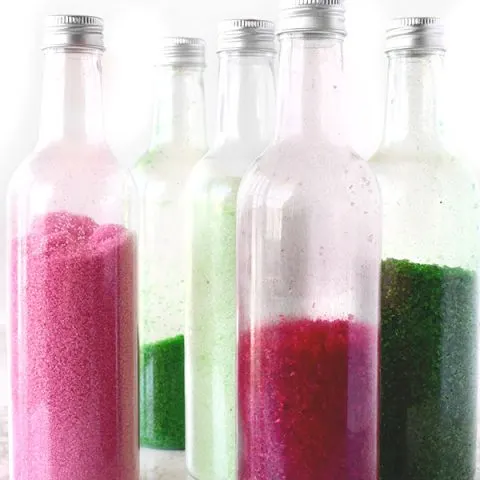
Creating your own colored sugar is fun, easy, and simple. It’s a great way to add your own beautiful colors to cookies, cupcakes, and more.
Ingredients
- ½ cup sugar* (100 grams)
- Gel food coloring (see note for liquid food coloring)
Instructions
- Preheat oven to 120°F or 50°C.
- place sugar in a resealable plastic bag.
- Add a drop of food coloring. Close bag.
- Mix the sugar around until the color has spread evenly. Add more coloring if you want a darker color. (I like adding one drop at a time for extra control).
- Spread evenly on a baking sheet lined with parchment paper. Bake for 5 minutes.
- Remove and break the sugar into pieces, then place in a resealable plastic bag.
- Roll over the bag repeatedly back and forth with a rolling pin until you reach a fine, sugar-like consistency.
Notes
*See notes on types of sugar.
If using liquid food coloring, use ½ to 1 teaspoon. Use more for deeper color and less for pastels. Bake for an extra 5 minutes.
Recommended Products
Some of the links below are affiliate links, which means that if you choose to make a purchase, I will earn a small commission. This commission comes at no additional cost to you.
Nutrition Information:
Yield:
24Serving Size:
1Amount Per Serving: Calories: 16Total Fat: 0gSaturated Fat: 0gTrans Fat: 0gUnsaturated Fat: 0gCholesterol: 0mgSodium: 0mgCarbohydrates: 4gFiber: 0gSugar: 4gProtein: 0g
